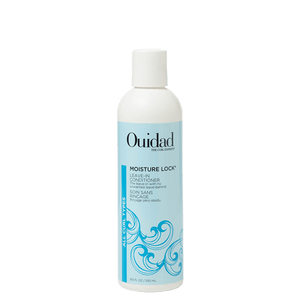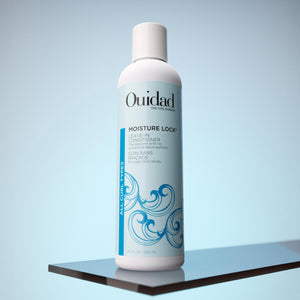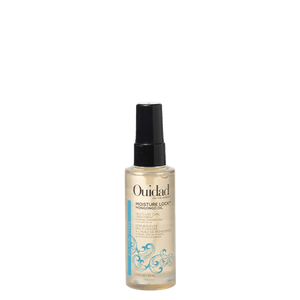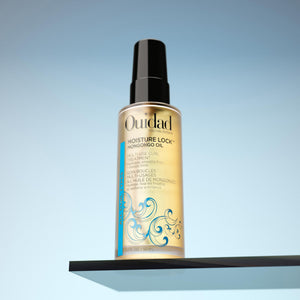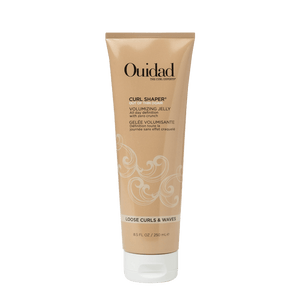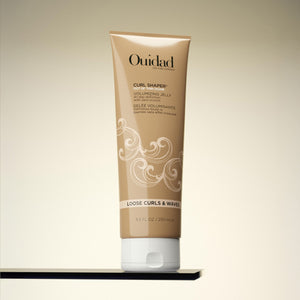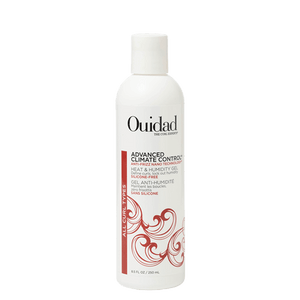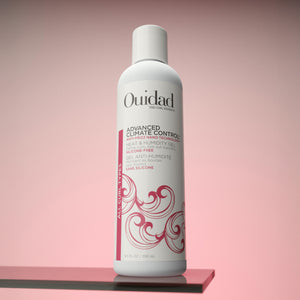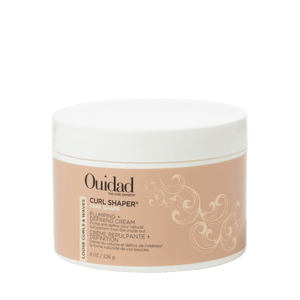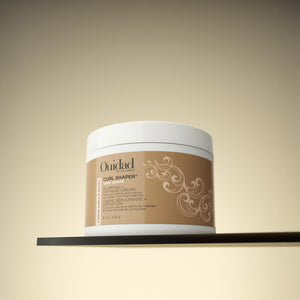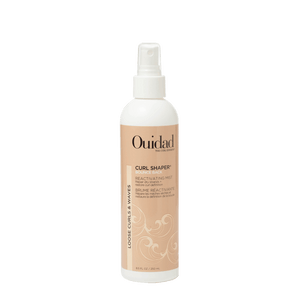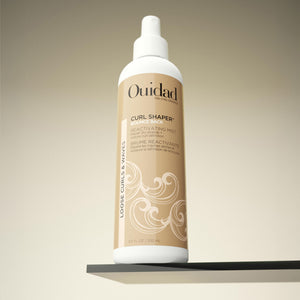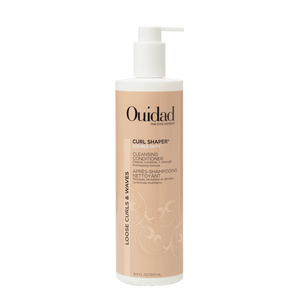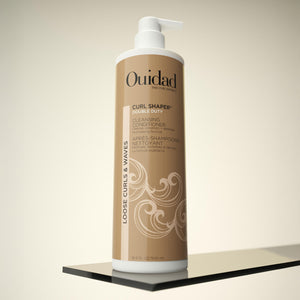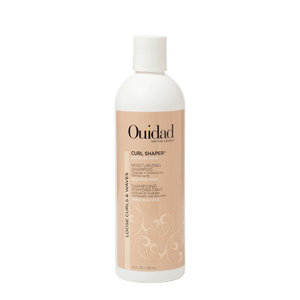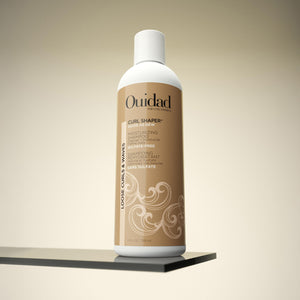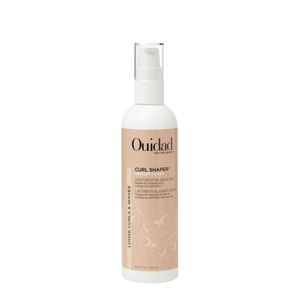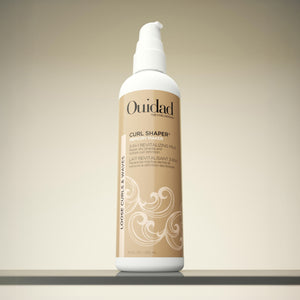Learn how to care for wavy hair types 2A, 2B, and 2C. Get styling tips, routines, and product picks for soft, defined, frizz-free waves.
What is wavy hair?
Wavy hair is often misunderstood, not quite straight, not quite curly, and rarely treated like its own category. But wavy hair isn’t just a phase between textures. It’s a full texture family with movement, versatility, and pattern that deserves its own space in the curl conversation.
Because of its dual nature, wavy hair can sometimes feel like a balancing act. It’s prone to getting weighed down by heavy products yet dries out easily if not moisturized correctly. Many wavies find themselves using straight hair products that flatten their waves or curly products that overwhelm them with weight or crunch. The result? Frizz, limpness, or inconsistent wave patterns that don’t reflect the hair’s true potential.
Waves can range from barely-there bends to more defined S-shapes that look like loose curls, depending on the day, the weather, and the products you use. They often mimic some behaviors of curly hair—hello, frizz, volume shifts, and unpredictable pattern, but also bring their own challenges. Still, with the right care and a little experimentation, wavy hair can be one of the most low-maintenance, high-impact textures to embrace. It’s not about controlling the wave—it’s about learning how to let it thrive.

Why embracing your waves matters
The key to embracing your waves isn’t chasing uniformity, it’s understanding your wave type, what it needs to thrive, and how to bring out its best shape and shine. Once you do, wavy hair becomes something to work with, not against. And trust us, when it’s happy, it shows.
Wavy hair types: 2A, 2B, 2C
Wavy hair lives in the Type 2 curl category. Within that, there are three wave patterns that can show up on their own—or together. It’s one of the most common textures, but also one of the most overlooked when it comes to curl care. This oversight often leads to wavies struggling with products and routines that aren’t quite right for their pattern. Some may attempt to treat their hair like it’s straight, focusing only on smoothing and shine, while others jump straight into curl-heavy routines that leave their waves weighed down and greasy.
The key is recognizing that wavy hair needs its own thoughtful approach, products that add hydration without heaviness, methods that enhance definition without crunch, and techniques that protect movement without flattening it. With the right strategy, wavy hair can be incredibly dynamic, soft, defined, voluminous, and easy to style day to day.
Type 2A
Loose, gentle waves that start at the mid-lengths. This hair type is often fine or thin and gets weighed down easily. It straightens quickly but can also fall flat without the right support.
Type 2B
More defined S-waves that start closer to the roots. This hair type usually has medium density and texture, with a bit more frizz. It often holds curl better than 2A but can puff up in humidity.
Type 2C
Tighter, more coiled S-shapes that can start right at the root. Sometimes mistaken for loose curls, 2C waves are thicker, more prone to frizz, and more reactive to weather changes.
Mixed wave types
It’s also common to have a mix of types, 2B in the front, 2C underneath, 2A on top. That’s why having a flexible, mix-and-match routine makes a difference.
How to care for wavy hair year-round
Wavy hair is all about balance. It needs hydration, but not heaviness. Hold, but not crunch. Movement, but still definition. Here’s how to keep it all in check throughout the year.
The changing seasons can dramatically affect how your waves behave. In warmer months, your hair may feel frizzier or puffier due to increased humidity, while colder weather often brings dryness, static, and lackluster waves. That’s why it’s important to adapt your routine slightly as the environment shifts. In summer, focus on humidity protection and lightweight hydration; in winter, lean into richer creams and oils to shield against dry indoor air.
Equally important is understanding that wavy hair often needs targeted treatment depending on its pattern and density. If your waves are finer, you’ll want to avoid heavy butters or thick stylers that can weigh down your shape. For thicker, higher-density waves, layering moisture and hold products can help maintain definition and control. Pay attention to your roots as well, waves often fall flat at the crown, so techniques like root clipping or diffusing upside down can make a big difference.

Cleanse
Use sulfate-free, lightweight shampoos that don’t strip moisture or weigh you down. If you use products regularly or live in a hard water area, clarifying every week or two can help reset your waves.
Try: Water Works Clarifying Shampoo
Condition
Focus hydration where you need it: mid-lengths to ends. Use a lighter rinse-out formula on wash days and layer in a leave-in as needed.
Try: Moisture Lock Leave-In Conditioner
Drying
Waves dry best with minimal friction. Use a microfiber towel or cotton t-shirt to blot, not rub. Air drying enhances natural texture, but a diffuser on low heat can help boost volume and speed things up.
Wavy hair routine essentials
Consistency is key. You don’t need 15 steps, but you do need a rhythm. Wavy hair thrives on repetition and care that responds to its ever-changing texture. One of the biggest game-changers for managing waves is having a consistent foundation. Rather than trying new products or techniques with every wash, building a regular cadence that supports your wave pattern will lead to better, more predictable results. Over time, you’ll learn which products your hair loves, how long you can go between washes, and what methods deliver the most definition with the least effort. That doesn’t mean your routine can’t evolve—it just means it should be rooted in structure. Whether your hair loves low-poo cleansing, thrives on daily refreshes, or needs a deep treatment every other week, getting in tune with your wave pattern is the fastest path to healthy, happy hair.
Here’s a basic structure:
|
Weekly Routine |
Daily or Between Washes |
|
Cleanse 2–3 times depending on oil and buildup |
Refresh with a curl spray or water |
|
Clarify every 1–2 weeks |
Add a light leave-in or cream to reactivate wave shape |
|
Use a deep treatment mask once a month |
Protect overnight with a silk pillowcase or pineapple technique |
How to style wavy hair
Styling is where waves really get to shine. The goal: enhance your natural pattern, not work against it.
Because wavy hair is so adaptable, styling can be a creative process, and one that shifts depending on your hair’s mood, the weather, or your schedule. Some days you may want more volume, other days more definition. The beauty of waves is that they can handle both, as long as you lay the right foundation.
Start with understanding how much hold you need. Lightweight stylers like gels, mousses, or curl jellies tend to work best for fine or looser waves, while thicker creams and plumping formulas may be better suited for more textured or frizz-prone waves. The way you apply products matters too, raking helps distribute product evenly, scrunching encourages shape, and praying hands smooth the outer layer.
Once styled, avoid touching your hair while it dries. Frizz and separation often come from mid-dry manipulation. Instead, let your waves set in peace, then fluff and shake at the roots for added volume. With a little practice and a touch of intention, you’ll find your styling groove, and your waves will thank you.
Apply product on wet hair
Waves tend to frizz if product is applied to dry or partially dry hair. Start styling right after your shower while your hair is still damp or soaking.
Use the rake and shake method
Rake product through each section, then gently shake the ends to encourage wave clumping and definition.
Scrunch for volume
Once you’ve applied your stylers, scrunch upward to set the shape. Avoid touching your hair as it dries to keep the frizz away.
Heat vs. no-heat styling
Wavy hair handles both heat and no-heat styling well, as long as it’s protected. The key is understanding when to use which method, and how to prep your hair properly to avoid damage or frizz. For example, if you’re short on time or aiming for added lift at the roots, a diffuser can help speed up drying while encouraging volume. Make sure to use a heat protectant spray or leave-in with thermal protection to create a buffer between your strands and the heat source.
On the flip side, if you’re looking to embrace your natural texture, no-heat methods like plopping or braiding can define waves gently while keeping your hair healthy. Switching between these methods depending on the season, your schedule, or the occasion gives you maximum flexibility, without compromising your hair’s health.
No-heat styling
Air drying, plopping, braiding, or wrapping overnight gives soft shape without damage. Apply product, scrunch, and let your waves form.
Heat styling
Use a diffuser for faster drying and more root lift. For refining, a curling wand or flat iron can enhance bend or add definition. Always use a heat protectant first.
Try: Moisture Lock Mongongo Oil
How to manage wavy hair in humidity and dryness
Wavy hair is highly reactive to the environment, which means seasonal shifts can dramatically change the way your hair looks and feels. From humid summer days that turn defined waves into frizz, to dry winter air that robs hair of moisture and shine, managing your waves requires a flexible, climate-conscious approach. The good news? With the right strategies and products, you can keep your waves looking soft, defined, and healthy, no matter the weather.
Humidity
Waves puff up fast in humid climates. The trick is sealing moisture in so the air doesn’t have a chance to enter. Layer your leave-in and gel to set your shape and block frizz.
Try:

Winter dryness
Cold air and indoor heating pull moisture from the hair. In the winter, amp up your hydration and consider layering leave-in with an oil.
Try:
Best products for wavy hair
Finding the right products is one of the most important, and often most confusing—parts of building a wavy hair routine. Because wavy hair tends to walk the line between textures, it’s essential to choose formulas that hydrate without overdoing it, provide hold without crunch, and support your wave pattern without flattening it out. The ideal products for wavy hair are lightweight but effective, able to deliver definition and softness while keeping frizz at bay.
Below is a curated list of Ouidad’s best-in-class cleansers, conditioners, stylers, and finishers that work beautifully for Type 2 hair. Whether you’re starting from scratch or refreshing your current lineup, these products will help you get the most out of your waves. Feel free to mix and match depending on your pattern, density, and the season, because your best hair day starts with the right foundation.
Cleanse
Condition
Style
Finish

Wavy wisdom: wrapping it all up
Wavy hair isn’t just an in-between texture, it’s a pattern all its own, with its own needs and rewards. When you understand how your waves behave and give them consistent, tailored care, they can be one of the most expressive, low-maintenance textures around.
From building a lightweight, layered routine to navigating seasonal shifts and choosing the right stylers, this guide is your foundation. As your waves evolve, so will your approach—and that’s a good thing. The most successful wavy routines are built on experimentation, patience, and self-trust.
Whether your waves are soft and loose or tighter and textured, they’re worth celebrating. With the right tools, a bit of technique, and a whole lot of curl love, you’ll be well on your way to your best hair days yet.




